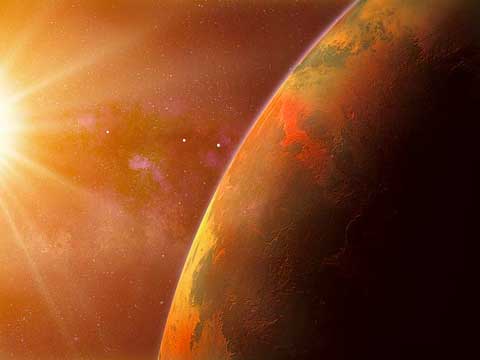Astronomers have detected our “grotesque” twin: A planetary system arranged much like our own solar system, a new study says.
Dubbed GJ676A, the system has two rocky planets orbiting close to its host star, and two gas giants orbiting far away. This means the system is arranged like our system—though in GJ676A, everything is much larger.
For instance, the smallest rocky planet in GJ676A is at least four times the mass of Earth, while the largest gas giant is five times the size of Jupiter.
Other multiple-planet systems have been discovered, such as HD10180, which has been called the richest exoplanetary find ever because of the seven to nine planets orbiting its host star.
But HD10180’s planets are all gas giants in relatively close orbits, while GJ676A has both rocky and gas planets—and its “Neptune-like” planet takes 4,000 days to make one orbit.
The long orbits of GJ676A’s gas giants and the short orbits of its close-in, extremely hot super Earths are what led the astronomers to dub GJ676A our solar system’s twin.
Source: National Geographic News – Solar System’s “Grotesque” Twin Found
